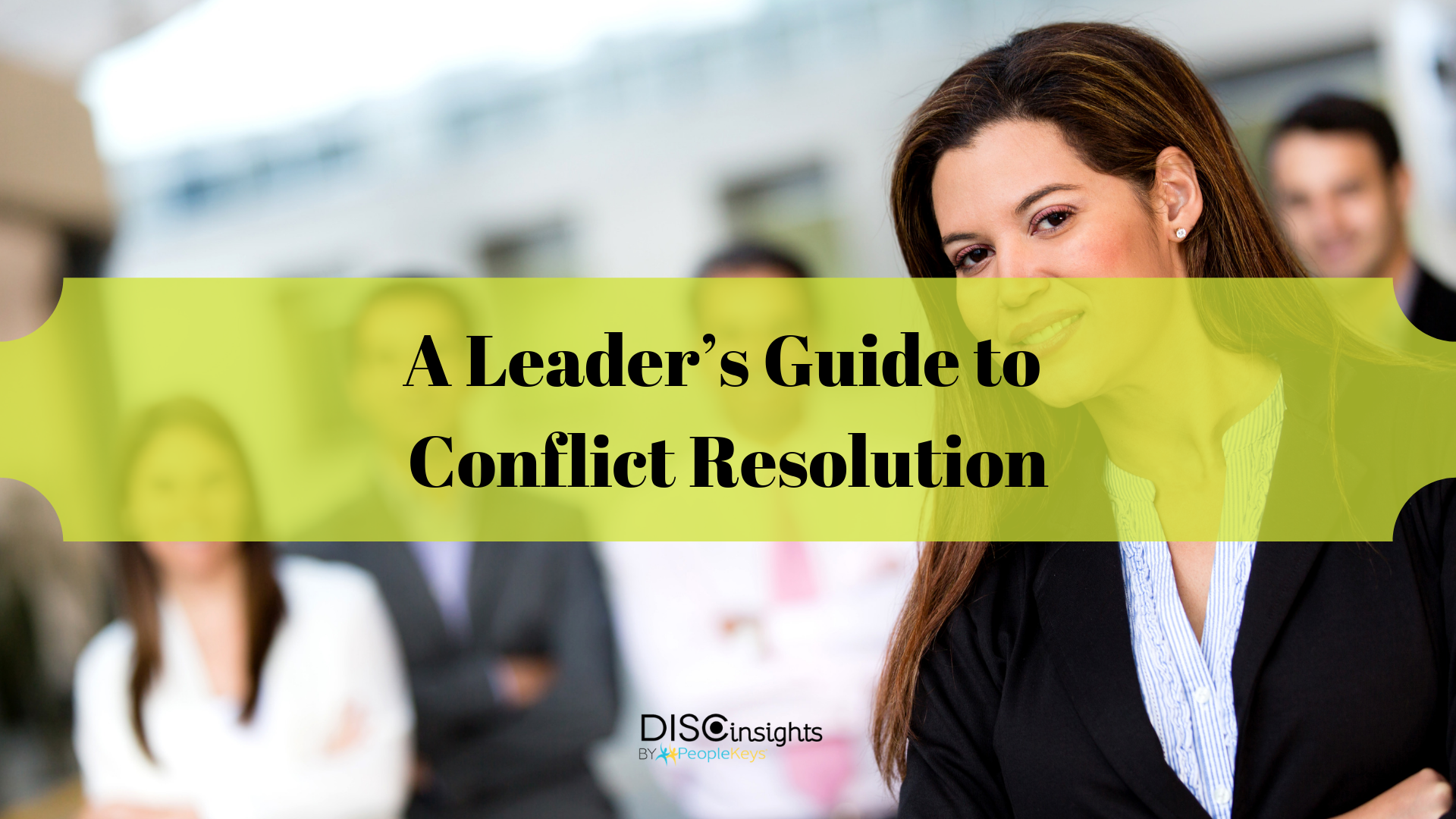- SHOP BY PRODUCT
- DISC TRAINING & CERTIFICATION TOOLS
- DISC RESOURCES
- BLOG
- SHOP BY PRODUCT
- DISC TRAINING & CERTIFICATION TOOLS
- DISC RESOURCES
- BLOG
- ALL ITEMS



No matter what kind of leader you are, there is going to come a point when you encounter some kind of conflict either between yourself and another individual or between two individuals on your team. Since we all see things from a different perspective, as a result of our own biases and personality styles, conflict is inevitable. The way you react is going to make the difference in the outcome. Here are some quick tips to keep in mind and practice for the next time you need to resolve a bad situation:
 We all have blind spots. It’s important to set aside your own bias and understand the viewpoint from the other person’s perspective. If you’ve taken the PeopleKeys’ Introduction to Behavioral Analysis course, you’ll recall the Johari Window. The Johari Window, also known as the “trust model,” shows us how removing blind spots can build trust and open communication. Asking open-ended questions to get the other person talking will help reveal what they believe the issue to be and help you understand where to go from there. Conflict sometimes occurs simply because someone just wants to be heard or understood.
We all have blind spots. It’s important to set aside your own bias and understand the viewpoint from the other person’s perspective. If you’ve taken the PeopleKeys’ Introduction to Behavioral Analysis course, you’ll recall the Johari Window. The Johari Window, also known as the “trust model,” shows us how removing blind spots can build trust and open communication. Asking open-ended questions to get the other person talking will help reveal what they believe the issue to be and help you understand where to go from there. Conflict sometimes occurs simply because someone just wants to be heard or understood.
As a leader, you are responsible for staying in control of the situation as well as being fair in moving toward a positive outcome. Ask yourself: “What can I do to make this a win-win situation?” Make sure all issues are laid out on the table to be addressed. Keep your emotions controlled -- take a deep breath and remain calm and assertive (but not aggressive). It is just as important to actively listen to what the other person is saying as it is to talk it out. Employ good listening skills and solicit feedback to confirm you truly understand the message the other person is trying to get across. If appropriate, empathize and be sincere in both your verbal communication and body language.
Recognizing the personality style of the person in opposition will reveal some important knowledge about them which will help you stay in control of the situation. If you don’t already know the DISC style of the person in conflict, in the “remove blind spots” stage make sure to ask open-ended questions which will also help determine whether this person is passive (S or C) or active (D or I) and whether they are task (C or D) or people-oriented (S or I). Knowing the fears, strengths, limitations and how to best communicate (or how NOT to communicate) with each style will make it easier for you to augment your style to move with them in a way they will understand and react more favorably.
Look for common ground in your discussion, and regardless of whether this is a one and done situation or requires additional resolution it is important to work out a plan of action together and come up with solutions to build upon your relationship and resolve your conflict fairly. Determine a time to follow up with the other person to make sure no other issues need to be addressed. It would be great if all quarrels ended in a win-win for both parties, but unfortunately there are times when this is unlikely and either both parties walk away with a severed relationship or another means of resolution will need to be sought after.
Read more about 4 personality specific DISC strategies for conflict resolution.

© PeopleKeys. All Rights Reserved
WORKING DAYS/HOURS
Mon - Fri / 8:30AM - 5:00PM EST
